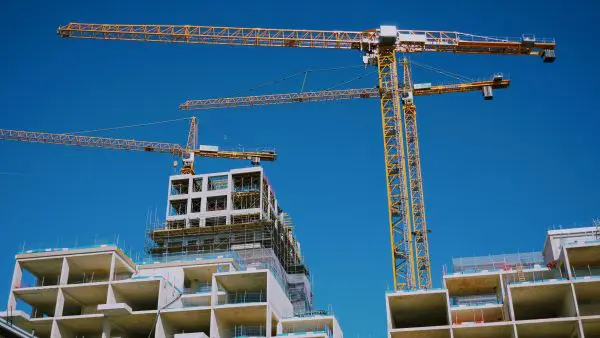What are the modern methods of construction (and how do they work)?
Posted on: 10 January, 2024

Find out the new and innovative trends that are helping the construction sector address its impact on the climate crisis.
To address the worsening climate crisis, we need immediate and transformative action across the globe. This applies to all organisations as well as the sectors they operate in, in particular, the built environment and the construction industry.
Beyond physical structures taking up natural land and resources, our sector is one of the biggest contributors to carbon emissions. However, the need for buildings is only expected to grow. In fact, it’s estimated that by 2050, the global population will have reached around 9.7 billion. So, simply not building any new structures is a non-option.
As a result, those operating in the built environment must be able to adapt and find new ways of working that fit within the remits of global carbon emissions targets.
Ultimately, it’s about getting the right balance between the growing need for infrastructure amid the housing crisis and the need for sustainability and carbon-neutral initiatives. It’s also important to get the perfect combination of efficiency, quality and sustainability within all structures moving forward, leading to some huge innovations in modern methods of construction (MMC) and several new ways of working have emerged.
But what are these new building methods, and how they can be beneficial for the future of both the industry and the environment?
What are modern methods of construction (MMC)?
The term ‘modern methods of construction’ (MMC) refers to the new and innovative ways of building structures that are being adopted by those in the construction industry right now.
Several key methods are continuously emerging as a result of new technologies and automated production, such as 3D volumetric construction, flat slabs and precast panels. These differ from traditional methods in several ways, not least of all because they place greater importance on flexibility.
6 different types of MMC
Here are some of the most popular techniques being adopted right now.
1. Modular buildings and 3D printing
Modular buildings are made up of several key components that can be created off-site in a controlled environment, before being transported to the correct location for construction.
By building modules off-site in this way, manufacturers can cut down on costs, construction professionals can save time and money, and quality control is far more effective.
Similarly, 3D printing is being used to create prototypes or print complex elements. This makes it possible to save time and money, as well as produce high-quality and uniform components.
Learn more: Modular construction 101: here’s how it’s making buildings sustainable
2. Flat slab construction
Flat slab construction, as the name suggests, relies on flat concrete slabs reinforced with concrete columns. This removes the need for beams and offers flexibility in the design layout. It also cuts down the time required to create them, and the cost of cladding.
3. Timber framing
The timber framing methodology uses large wooden beams and columns to create a skeleton for the structure before the exterior layers are added – whether that’s concrete, glass, or steel cladding.
This process helps to insulate the structure and make it stronger and more durable, increasing the lifecycle of the building and its components.
4. Precast panels
With this method, precast cladding panels are made on a production line in a factory environment, typically out of concrete or glass.
These panels can be uniform or they can be made with various features and specifications, depending on the needs of the contractors. For example, a wall panel could be made with a specific window or door space.
These elements are then delivered to the building site to be put together as required.
Learn more: A guide to prefabrication (and how it’s transforming construction)
5. Twin wall technology
Twin wall technology is a combination technique that relies on precast concrete and fresh, in-situ concrete.
These walls are initially created using two concrete slabs but are filled with wet concrete for reinforcement. Not only is this a faster method of construction, but it’s also more economical and can lead to more durable structures.
6. Hybrid methods
There are a lot of hybrid methods being designed and adopted that combine different MMC for the most impressive and beneficial results.
For example, some projects may combine semi-volumetric 3D construction techniques with prefabricated panel systems.
This approach allows businesses in the construction sector to embrace the best parts of their chosen methods for maximum savings and impact.
The future of the built environment as a result of MMC
The aforementioned methods can transform the traditional construction process in several ways. Implementing a combination of these initiatives and modern methods of construction will make it possible for organisations in the industry to start reducing their negative impact on the environment.





